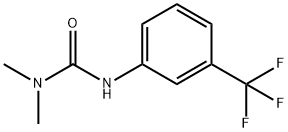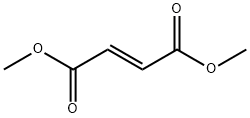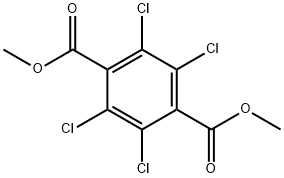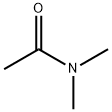Fluometuron
Synonym(s):1,1-Dimethyl-3-[3-(trifluoromethyl)phenyl]urea;Fluomethuron
- CAS NO.:2164-17-2
- Empirical Formula: C10H11F3N2O
- Molecular Weight: 232.2
- MDL number: MFCD00018012
- EINECS: 218-500-4
- SAFETY DATA SHEET (SDS)
- Update Date: 2024-03-14 15:18:25

What is Fluometuron?
Description
Fluometuron is a white crystalline solid oftenused in liquid solution that may be flammable. Molecularweight=232.23; Freezing/Melting point=163-165C;Vapor pressure=9.4 3 1027 mmHg at 20C. HazardIdentification (based on NFPA-704 M Rating System):Health 1, Flammability 1, Reactivity 0. Slightly soluble inwater.
Chemical properties
Crystalline solid. Partially soluble in water; soluble in alcohol and acetone.
Chemical properties
Fluometuron is a white crystalline solid often used in liquid solution that may be flammable.
The Uses of Fluometuron
Fluometuron is an phenylurea based herbicide used on cotton and sugarcane crops.
The Uses of Fluometuron
Herbicide.
The Uses of Fluometuron
Herbicide used to control many annual broad-leaved weeds in sugarcane and cotton
Definition
ChEBI: Fluometuron is a member of the class of 3-(3,4-substituted-phenyl)-1,1-dimethylureas that is urea in which one of the nitrogens is substituted by a 3-(trifluoromethyl)phenyl group while the other is substituted by two methyl groups. It is a herbicide used for the control of broadleaf weeds and annual grasses in cotton. It has a role as an agrochemical, an environmental contaminant, a herbicide, a xenobiotic and a photosystem-II inhibitor. It is a 3-(3,4-substituted-phenyl)-1,1-dimethylurea and a member of (trifluoromethyl)benzenes.
General Description
White crystals or powder. Melting point 163-164°C. Readily soluble in organic solvents. Used for pre- and post-emergence weed control in cotton.
Reactivity Profile
Fluometuron is a trifluoromethyl urea derivative. May react with hypochlorites to form nitrogen trichloride which explodes spontaneously in air [J. Am. Chem. Soc. 63:3530-32]. May reacts with azo and diazo compounds to generate toxic gases. Reacts with strong reducing agents to form flammable gases.
Hazard
Toxic by ingestion. Questionable carcinogen.
Health Hazard
SYMPTOMS: Symptoms of exposure to Fluometuron may include possible convulsions or coma; irritation to the skin, gastrointestinal tract, respiratory tract; and lowered blood pressure.
Fire Hazard
Flash point data are not available for Fluometuron, but Fluometuron is probably combustible.
Flammability and Explosibility
Non flammable
Agricultural Uses
Herbicide: A General Use Pesticide (GUP). Fluometuron is a selective herbicide which acts on susceptible plants by inhibiting photosynthesis. Fluometuron is registered by EPA exclusively for use on cotton and sugarcane. It can be applied pre-emergence, for weed control before planting, or post-emergence, after target crops and weeds come up, and may have residual activity for several months. Fluometuron is available in liquid, dry flowable, and wettable powder formulations.
Trade name
C 2059®; CIBA 2059®; COTORAN®; COTORAN® 50SC; COTORAN MULTI 50WP®; COTOREX®; COTTONEX®; COTTONEX® 50SC; DREXEL CROAK®; FLO-MET®; FLUOMETURON® 50SC; HERBICIDE C-2059®; HIGALCOTON®; LANEX®[C]; METURON 80 DF®; PAKHTARAN®; SETRE FLUOMETURON 80 WP®
Safety Profile
Moderately toxic by ingestion and intraperitoneal routes. Questionable carcinogen with experimental carcinogenic data. Mutation data reported. When heated to decomposition it emits very toxic fumes of Fand NOx
Potential Exposure
This material is used as a herbicide.
First aid
Skin Contact: Flood all areas of body thathave contacted the substance with water. Do not wait toremove contaminated clothing; do it under the water stream.Use soap to help assure removal. Isolate contaminatedclothing when removed to prevent contact by others. EyeContact: Remove any contact lenses at once. Flush eyeswell with copious quantities of water or normal saline for atleast 20-30 min. Seek medical attention. Inhalation: Leavecontaminated area immediately; breathe fresh air. Properrespiratory protection must be supplied to any rescuers. Ifcoughing, difficult breathing, or any other symptomsdevelop, seek medical attention at once, even if symptomsdevelop many hours after exposure. Ingestion: Consult aphysician, hospital, or poison center at once. If the victim isunconscious or convulsing, do not induce vomiting or giveanything by mouth. Assure that the airway is open, lay onside, and keep head lower than body and transport immediately to medical facility. If conscious and not convulsing,give a glass of water to dilute the substance. Do not inducevomiting without a physician’s advice.
Environmental Fate
Soil. In soils, ?uometuron rapidly degrades (half-life approximately 30 days) to carbon dioxide, polar and nonextractable compounds (Hartley and Kidd, 1987; Humburg et al., 1989).
Groundwater. According to the U.S. EPA (1986) ?uometuron has a high potential to leach to groundwater
Plant. In plants, ?uometuron degrades to a demethylated intermediate which subsequently is degraded to the aniline moiety (possibly m-tri?uoromethylaniline) (Hartley and Kidd, 1987; Humburg et al., 1989). Duke et al. (1991) reported that ?uometur
Chemical/Physical. Emits toxic fumes of nitrogen oxides and ?uorine when heated to decomposition (Sax and Lewis, 1987).
storage
Color Code—Blue: Health Hazard/Poison: Storein a secure poison location. Prior to working with thischemical you should be trained on its proper handling andstorage. Store in a refrigerator or a cool, dry place and protect from exposure to ultraviolet light. Keep liquid awayfrom oxidizers. Where possible, automatically pump liquidfrom drums or other storage containers to processcontainers.
Shipping
UN2767 Phenyl urea pesticides, solid, toxic, Hazard Class: 6.1; Labels: 6.1-Poisonous materials.
Incompatibilities
Liquid solutions are incompatible with oxidizers (chlorates, nitrates, peroxides, permanganates, perchlorates, chlorine, bromine, fluorine, etc.); contact may cause fires or explosions. Keep away from alkaline materi als, strong bases, strong acids, oxoacids, epoxides.
Properties of Fluometuron
| Melting point: | 163°C |
| Boiling point: | 280 °C |
| Density | 1.39 |
| vapor pressure | 0Pa at 25℃ |
| storage temp. | 0-6°C |
| solubility | Chloroform (Sparingly, Heated), Methanol (Slightly) |
| pka | 14.55±0.70(Predicted) |
| form | Powder |
| color | White |
| Water Solubility | Slightly soluble. <0.1 g/100 mL at 21.5 ºC |
| Merck | 14,4154 |
| BRN | 2217354 |
| CAS DataBase Reference | 2164-17-2(CAS DataBase Reference) |
| IARC | 3 (Vol. 30, Sup 7) 1987 |
| NIST Chemistry Reference | Urea, N,N-dimethyl-N'-[3-(trifluoromethyl)phenyl]-(2164-17-2) |
| EPA Substance Registry System | Fluometuron (2164-17-2) |
Safety information for Fluometuron
| Signal word | Warning |
| Pictogram(s) |
 Exclamation Mark Irritant GHS07 |
| GHS Hazard Statements |
H302:Acute toxicity,oral |
Computed Descriptors for Fluometuron
New Products
4-AMINO-TETRAHYDRO-PYRAN-4-CARBOXYLIC ACID HCL 4-Aminotetrahydropyran-4-carbonitrile Hydrochloride (R)-3-Aminobutanenitrile Hydrochloride 3-((Dimethylamino)methyl)-5-methylhexan-2-one oxalate 1,4-Dioxa-8-azaspiro[4.5]decane 5-Bromo-2-nitropyridine 4-(Dimethylamino)tetrahydro-2H-pyran-4-carbonitrile Diclofenac Potassium Ornidazole IP Diclofenac Sodium IP/BP/EP/USP Mefenamic Acid IP/BP/EP/USP Aceclofenac IP/BP/EP Nimesulide BP SODIUM AAS SOLUTION ZINC AAS SOLUTION BUFFER SOLUTION PH 10.0(BORATE) GOOCH CRUCIBLE SINTERED AQUANIL 5 BERYLLIUM AAS SOLUTION Methylcobalamin (vitamin B12) SODIUM METHYL PARABEN SODIUM VALPROATE Racecadotril XANTHAN GUMRelated products of tetrahydrofuran








You may like
-
![1,1-Dimethyl-3-[3-(trifluoromethyl)phenyl]urea CAS 2164-17-2](https://img.chemicalbook.in//Content/image/CP5.jpg) 1,1-Dimethyl-3-[3-(trifluoromethyl)phenyl]urea CAS 2164-17-2View Details
1,1-Dimethyl-3-[3-(trifluoromethyl)phenyl]urea CAS 2164-17-2View Details
2164-17-2 -
 ethyl 2-(3-(tert-butyl)phenoxy)-2-methylpropanoate 98%View Details
ethyl 2-(3-(tert-butyl)phenoxy)-2-methylpropanoate 98%View Details -
 89796-99-6 Aceclofenac IP/BP/EP 98%View Details
89796-99-6 Aceclofenac IP/BP/EP 98%View Details
89796-99-6 -
 61-68-7 98%View Details
61-68-7 98%View Details
61-68-7 -
 Diclofenac Sodium IP/BP/EP/USP 98%View Details
Diclofenac Sodium IP/BP/EP/USP 98%View Details
15307-79-6 -
 Ornidazole IP 16773-42-5 98%View Details
Ornidazole IP 16773-42-5 98%View Details
16773-42-5 -
 51803-78-2 Nimesulide BP 98%View Details
51803-78-2 Nimesulide BP 98%View Details
51803-78-2 -
 15307-81-0 98%View Details
15307-81-0 98%View Details
15307-81-0